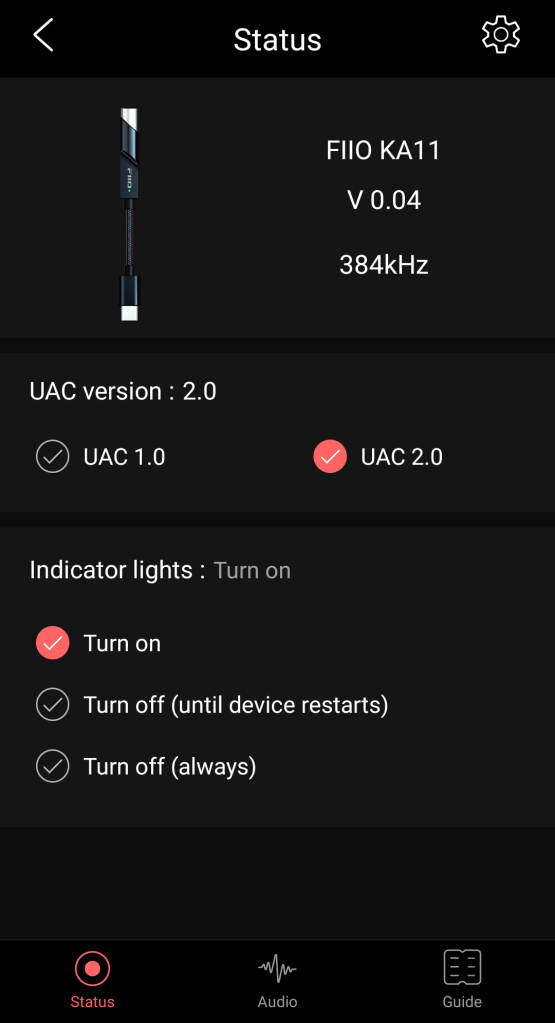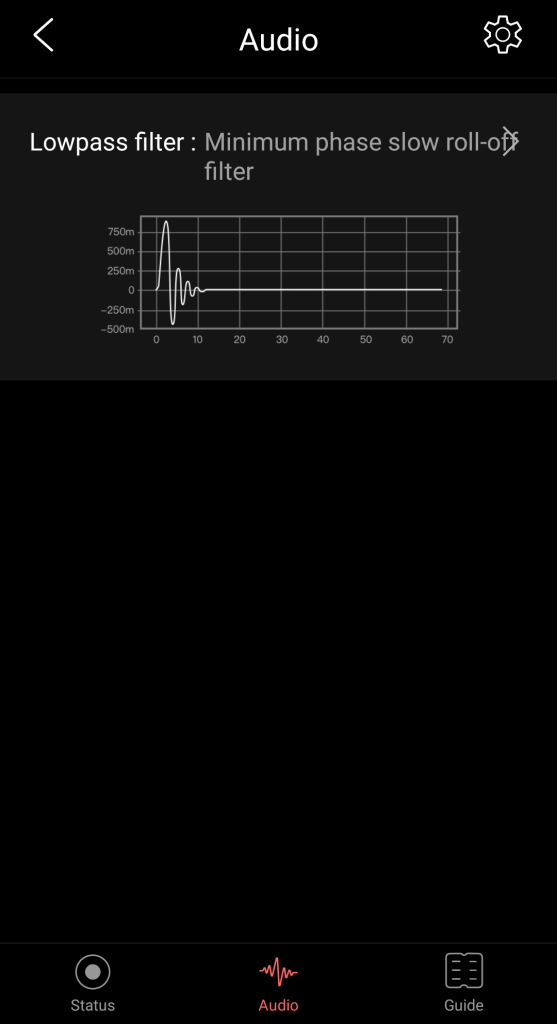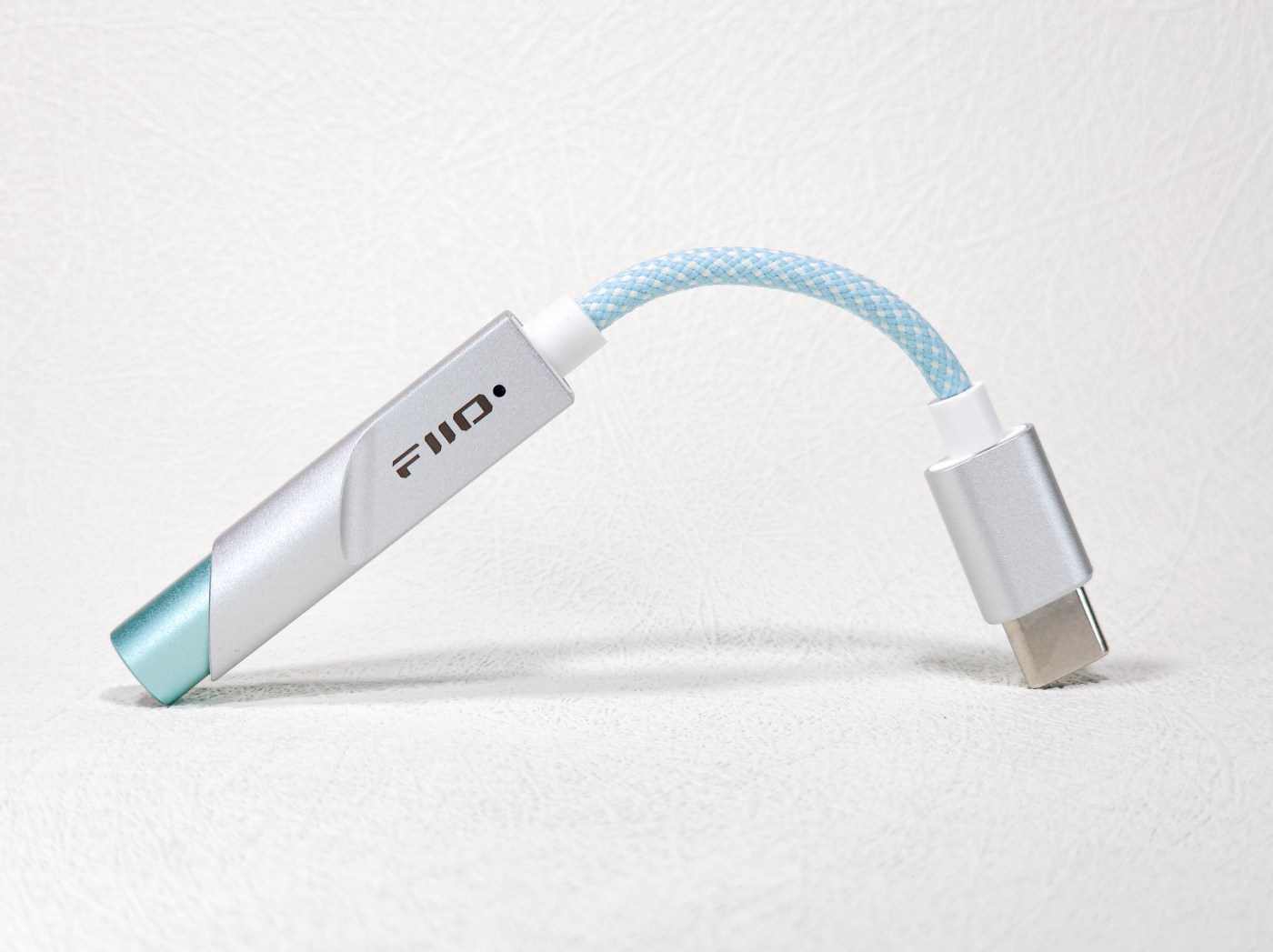>>I am brazilian and I speak portuguese, so forgive my english, I’ll use translation tools to help<<
INTRO:
If you’re looking for a solution to connect your earphone to your smatphone, the answer is here! Yes, forget about Apple’s dongle, because the FiiO KA11 has burst onto the market!
It’s no secret that FiiO has several DACs & Amplifiers that are synonymous with excellent cost-effectiveness. Today, let’s analyze the recently released entry-level dongle from the company.
Attention: The KA11 is selling like water in the desert, and it’s possible that the product may be sold out in the official store. A little patience might be needed until the stocks are replenished.
Price: $29,99 USD
Color: Midnight Black / Sunrise Silver
FiiO reviews: FH3, KA1, HS18 (in portuguese), JD7, KA5, FD11, Q11, M11S (in english)
FIIO LINKS:
https://s.click.aliexpress.com/e/_DnKxL0D
https://s.click.aliexpress.com/e/_DBObWDP
SPECIFICATIONS:
– Brand: Dual brand- FIIO/JadeAudio
– Product name: Portable DAC/Amp (USB dongle)
– Product model: KA11
– USB chip: SAVITECH SA9312L
– DAC chip: CIRRUS LOGIC CS43131
– Op-amp chip: SGMICRO SGM8262
– System support: Android/IOS/Windows/Mac
– Decoding support: Supports up to PCM384kHz/32bit, DSD256
– Input: Type-C or Lightning
– Output: 3.5mm single-ended
– Output power:
L+R≥200mW+200mW (32Ω, THD+N<1%, USB IN)
L+R≥245mW+245mW (16Ω, THD+N<1%, USB IN)
– SNR: ≥125dB (32Ω, A-weighted)
– THD+N: <0.0006% (0dB, 32Ω), <0.0003% (0dB, 300Ω)
– Noise floor: About 1.7uV A-weighted
– Other functions: RGB light indicates corresponding sampling rate
– UAC 2.0 e UAC 1.0
– Material: Aluminum-magnesium alloy
– Dongle dimension: 11.3cm (edge to edge)
– Dongle weight: 8.5g
– Total weight (packaging, dongle, etc): 47.6g
– Packaging size: 16cm [L] x 6.5cm [W] x 2cm [D]
DEVICES USED:
– Kiwi Ears Quintet
– Shozy Form 1.1
– Tin HiFi P1
– FiiO M11S
– AUNE Yuki
– MotoZ3Play
– Samsung S22U
– Dell Inspiron (W10)
UNBOXING:
PHYSICAL ASPECTS:
Construction: Here we have the classic type of dongle with both ends connected by a non-detachable cable. The product is entirely coated with an aluminum & magnesium alloy, while the cable is made of a nylon-like material (paracord). It’s a simple dongle, designed for portability, featuring only a single 3.5mm output. This style is most common for those who simply want to plug in their earphones to the smartphones and go. In this regard, the KA11 is excellent because it’s lightweight and compact.
In terms of durability, I found the KA11 to be very well-made, and I wouldn’t worry about the fixed cable. I still see many people in communities who are concerned when a dongle has a fixed cable, and in the past, I shared that concern. However, since I review the iFi GO link, my opinion has changed. Nowadays, the quality of the products are much better than in the past, and of course, we’re also talking about companies with more elaborate Quality Control.
Today, I think the only benefit of a detachable cable is if you need a longer cable to connect to a computer or if you genuinely dislike the color or material the product offers. But other than that, for use solely with mobile phones, I believe having a fixed cable is even better because it reduces the number of contact points, which we know can lead to complications if not done very well.
Some people also worry a lot about this type of dongle because it directly connects to the USB-C port on the smartphone, and they fear damaging the device. Throughout my audio journey, I’ve evaluated various dongles, and I can confidently say that I still have the same smartphone I had before starting this journey. The smartphone still here, and I’ve never had any issues with the USB-C port. The current dongles I’ve tested all fit securely, without any slack, just like the KA11, the scope of this review.
Something I noticed when disconnecting the IEMs from the 3.5mm output is that I needed to apply some force to perform that action. That said, you need to hold the dongle to prevent it from detaching from the USB-C port on the smartphone. In summary, the 3.5mm output of the KA11 is quite tight.
The dongle features an RGB LED right next to the “FiiO” name. The LED colors represent the sampling rates: Blue – PCM below 48kHz; Yellow – PCM above 48kHz; Green – DSD. The device supports PCM 32-bit/384kHz and DSD256. I use FLAC files at 16-bit/44.1/48kHz and common music streaming services like Spotify and YouTube.
FiiO Control App:




As you can see from the screenshots, the App has limited functions for the KA11. It allows you to adjust the LED configuration, switch between UAC 1.0 and UAC 2.0 modes, and modify digital filters. According to the company, the App only works on Android devices. If you choose the Lightning version, will be compatible with Apple devices, you only won’t have access to the FiiO Control App.
PS: It seems that an earlier version of the App (v3.18) had a volume control feature, but the current version (v3.19) has removed this functionality.
USB Audio Class: The KA11 supports both UAC 1.0 and UAC 2.0 compatibility. UAC is the protocol used by USB ports to handle high-resolution audio files. UAC 1.0 can handle PCM files up to 24 bits/96 kHz, while UAC 2.0 can handle larger files, such as PCM 32 bits/384 kHz (superior) or DSD256 files. This can be useful for devices that require specific compatibility, such as the Nintendo Switch.
As for battery consumption through the 3.5mm output, using the Kiwi Ear Quintet, the battery usage was 15%. The smartphone I used had a 3.000mAh battery. The test involved 1 hour of playback with the screen off and Wi-Fi disabled (airplane mode). The volume was set to level 8 out of 15 available on Android
I also made a test with the Tin P1. In this case, I used a balanced 4.4mm cable in my P1, but I have an adapter from DD HiFi, the DJ44C MK2 model, which converts from 4.4mm to 3.5mm (losing the balanced connection but enabling the use of IEM with the 3.5mm output). The battery consumption with the Tin P1 was 13%. I followed the same procedure as the test with the Quintet, The only difference was adjusting the volume to 13 and playing another album. Interestingly, the consumption remained lower than in the initial test, even with the volume set higher. However, as always, these numbers aren’t 100% precise, they serve as a rough estimate.
Heating test: Before measuring battery consumption, I plugged the KA11 into my computer and listened to “The Smiths – Singles (1995)“. I didn’t even need to finish the album and the dongle was already quite warm. I used it at only 16% volume with the Shozy Form 1.1 (an easy-to-drive IEM). What I think about this product heating: It heats up a lot, that’s a fact, but it’s nothing absurd. The small contact area means you can hold the dongle without discomfort, it doesn’t get hot enough to cause any harm.
One drawback of the KA11 is that it doesn’t come with a USB-C to USB-A adapter for computers. This limitation affects older computers or devices that still use the USB-A port, which is still quite common. While you can purchase this adapter separately, it would have been more convenient if the company had included it with the product. Fortunately, I had an adapter that came with my AUNE Yuki, allowing me to test the KA11 on my computer as well.
On the computer, the KA11 was immediately recognized, and I didn’t need to install any drivers. The volume scale on the computer adjusts in 2% increments when scrolling with the mouse wheel, but you can also fine-tune it by using the mouse arrow. Till the moment, the dongle has not received any firmware updates. You can find a Q&A, driver downloads (if needed), the app download, and the equipment manual in the following link: https://www.jadeaudio.com/details?article_id=173&_l=en
EDIT: A new firmware is available here: https://forum.fiio.com/note/showNoteContent.do?id=202403061706174125325&tid=77
Another point of criticism for the product is that, according to the company, the KA11 doesn’t support microphones. Therefore, you won’t be able to answer calls using the dongle. Additionally, it doesn’t support SPDIF line-out





SOUND ASPECTS:
It’s important to remember that this analysis is subjective, based on my experience with the product and its synergy with other equipment I’ve used. I’ll also mention that the more objectivist part of this hobby aren’t quite my beach, so some information might be limited, I’m not an expert in the technical side of this type of product.
About the audio quality of the FiiO KA11 dongle, I think it’s at an excellent level. The KA11 comes equipped with the Cirrus Logic DAC chip, specifically the CS43131 model. Throughout the time I tested the product, the KA11 consistently demonstrated its competence, providing a sound that is 100% transparent, clean, and well-defined. I didn’t notice any distortion, coloration, background noise, or strange sounds. As it’s solely a 3.5mm DAC/AMP, it doesn’t have a balanced system.
Amplification: Here, the KA11 truly impressed me, both when connected to my smartphone and my notebook. Using the Kiwi Ears Quintet and the Shozy Form 1.1 (both easy-to-drive headphones) the KA11 proved to be a robust dongle. I compared it to the AUNE Yuki and the M11S. Among the three, the KA11 emerged as the clear winner. Of course, this is a subjective analysis, and it’s hard to precisely quantify how each one can be “better” than the other. When directly comparing the KA11 to the AUNE Yuki through the 3.5mm output at the same volume level, the KA11 exhibited a stronger and more dynamic sound. However, comparing it to the M11S was trickier due to the DAP’s 120-step volume configuration, which scales significantly toward the upper end. To achieve a balance in terms of sound and power, I set the KA11 to volume 9 on Android, while the M11S was at volume 95 (out of 120). I usually use the M11S at 80 for volume.
With the Tin P1, I think everyone will ask: can it drive the P1? Well, honestly, I found that it could, but I admit I’ve had better experiences with the P1. For instance, with the FiiO KA5 or the Questyle M15, although in both cases, I connected the P1 to the balanced 4.4mm output, which is not the case with the KA11. With the P1, I needed to set the volume between 13 and 15 out of the 15 available on Android.
I even increased the volume up to the maximum with the P1, and the KA11 didn’t clipping (distort). I consider this a positive point for the dongle, especially since other products distorted at maximum volume (even products more expensive than the KA11). As for the Kiwi Ears Quintet, I didn’t test it at maximum volume, the IEM would have been too loud, and I didn’t want to risk my hearing. The KA11 has plenty of power, I believe it can drive 99% of the IEMs on the market.
Digital filters: These filters are commonly found in DACs, but I confess I’ve never noticed any difference between them. I think it’s a feature provided by the chip, and companies often include it as an extra feature. When I discuss this with other friends in the hobby, none of them claim to perceive any difference either.
Comparing the KA11, the M11S, and the Yuki, I believe the KA11 leans more toward to a warm sound signature, while the M11S sounds more neutral, and the Yuki is cold. Of course, these differences are subtle, and it’s entirely possible that I fell victim to a placebo effect at some point. These are distinct products, each with specific components for signal amplification. Naturally, my conclusion is based solely on comparing one device to another, it doesn’t mean one is “cold,” another is “warm,” or “neutral,” especially when tested individually.
Today, I can confidently say that among the 3.5mm output dongles I’ve tested, the KA11 provides the best sense of performance. Considering other factors like build quality, design, and more, it ranks at the top in terms of cost-effectiveness. It’s certainly not perfect, but honestly, starting the hobby and being able to enjoy equipment like this, there’s nothing to complain about, it’s going to be the definitive dongle for a lot of people. Not long ago, I recommended the iFi GO link as an entry-level choice, but now I believe the FiiO KA11 has taken its place.

Thank you so much for being here!
Consider follow us on Instagram to get all the news!
We also have a group on Telegram, let’s talk!

